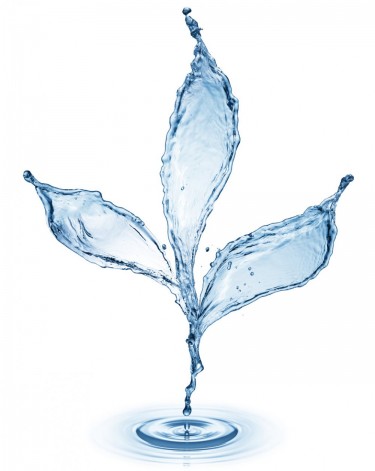
What is cannabis micropropagation and why is it important?
Micropropagation is a fantastic technique that allows plant breeders to produce a large amount of new plants without needing so many parent plants.
With the benefits of micropropagation, growers can get larger yields of the same crops with the same predictable traits. This technique has long been used by nurseries and farms, although the cannabis industry can benefit from the same fundamentals.
Recently, research by researchers at UConn analyzed the feasibility of cannabis micropropagation using the hemp plant. The findings, published in HortTechnology and discussed in Lancaster Farming, shed light on the current production challenges, particularly with medical cannabis.
“Micropropagation produces a lot more clones than other methods. Since it does not rely on seeds, the clones are uniform and behave similarly to the mother plant. Plants derived from tissue culture also have the benefit of being disease free. They often show increased vitality and you can grow much more in less space, ”explains Associate Professor Jessica Lubell-Brand, Ph.D.
In other plants, micropropagation has been found to be straightforward because breeders who are responsible for providing growth hormones and nutrients to the plants in tissue cultures, as well as regulating light and temperature, can already ensure that yield production is predictable. In the case of cannabis, however, this process needs to be adjusted to ensure that health plants are produced. “Cannabis doesn’t really want to be in tissue culture. During this investigation, a lot of effort is made to find out what the system needs more, ”explains Lubell-Brand.
“We start growing with the tips of shoots from plants grown in the greenhouse,” she adds. “Then we subculture them and if, for example, we suspect that something is missing, that the plant is not getting what it needs in the media, we experiment with nutrients such as calcium, magnesium, phosphorus and nitrogen to try to determine the length of time to extend that they grow in the culture. “
She goes on to say that with cannabis, they noticed shoot hyperhydricity that was causing problems with growth. Because of this, they need to adjust the media used in the first 6 weeks, but they have also added the use of ventilated vessels to improve airflow and relieve hyperhydricity.
“In addition to generating large numbers of parent plant clones, micropagated plants are very likely to show increased vigor compared to traditional stem propagated plants,” she says.
Researcher and student Lauren Kurtz says she plans to study it more closely in the future and learn how to refine the process, especially to find out the right time to root and how long shoots can stay in the crop. “The tissue culture for cannabis is not so well elaborated in the literature,” says Kurtz. “People are aware of the complications, problems and disadvantages, so people have been quite receptive to the paper.”
“Despite all efforts, it is still not easy to grow cannabis in tissue culture,” she adds. “Now, however, we can propagate shoots and roots and move them from the laboratory to the greenhouse, which is a step forward.”
Why is cannabis micropropagation important?
Common knowledge about growing cannabis or other types of plants is that they all start from seeds. The seeds are then placed in moist soil that has been aerated to induce germination and exposed to fluorescent light.
While this is the standard method for growing cannabis plants, there are many disadvantages for cannabis growers who continue to use seeds. For one thing, the plants will continue to reproduce seeds with unstable genetics and, for another, there is a 50% chance you will get male plants if you use non-feminized seeds. Also, you will have to wait longer for the plants to mature and, last but not least, there is a good chance that you will be wasting several seeds because they will not germinate.
This is why it is important for researchers to find a way to micropagate cannabis:
-
It preserves plant genetics: anyone in the cannabis industry can tell you that it is quite possible that two Blue Dream strains sourced from two different pharmacies will not get exactly the same results with the same person. This is because each cannabis seed has its own genetic makeup and there are far too many factors that influence changes in the growth of cannabis plants and lead to different effects.
The micropropagation will lessen the impact of this event as the plants obtained represent a good genetic copy of the cannabis media used.
-
It optimizes plant growth: while it will certainly take a lot more effort to grow cannabis through micropropagation, it will be worth it as the plants grown from it have top notch genes and will also grow in a much faster time. In other words, it will help growers make a profit quickly as there is a seriously huge demand these days.
-
Disease Prevention: Poor growing practices cause seed-borne diseases. As a result, they suffer from great crop losses. Hemp and cannabis growers can run the risk of losing millions of dollars if they don’t have a large supply of reliable, disease-free CBD hemp plants that can achieve constant cannabinoid levels and growth.
All of this again indicates quality and predictability, which is why there are more cannabis breeders who are interested in micropropagation.
Given the many challenges growers face, micropropagation is a good solution for adding genetic stability to plants. It will help them grow strains and get consistent results about specific traits they want to highlight while ensuring that the plants are disease free while being able to mass produce plants on a large scale .
MARIJUANA GROWING TECHNIQUES, READ MORE ..

GROWING MARIJUANA TAKES TOO MUCH WATER, HOW DO WE FIX IT?

Post a comment: